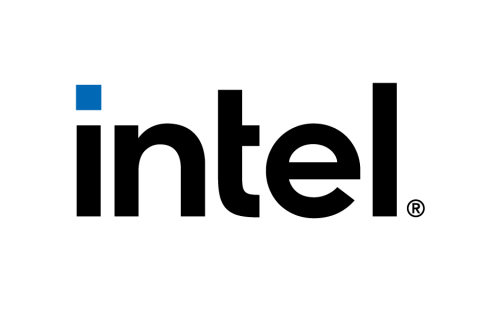SANTA CLARA, Calif.--(BUSINESS WIRE)--What’s New: Today, Intel shared an update on progress within the Intel Neuromorphic Research Community (INRC). The group has grown rapidly since its inception in 2018 and now includes more than 100 members, with Intel announcing today the addition of Lenovo, Logitech, Mercedes-Benz and Prophesee to explore the value of neuromorphic computing for business use cases. Additionally, Intel summarized a growing body of research results from INRC members that used the company’s neuromorphic research test chip, Loihi.
“In two short years, we’ve formed a vibrant community comprising hundreds of researchers around the world inspired by the promise of neuromorphic computing to deliver orders of magnitude gains in computing efficiency, speed and intelligent functionality. For the first time, we are seeing a quantitative picture emerge that validates this promise. Together with our INRC partners, we plan to build on these insights to enable wide-ranging disruptive commercial applications for this nascent technology.”
–Mike Davies, director of Intel’s Neuromorphic Computing Lab
Why It Matters: Intel created the INRC because it believes no one organization alone will effectively unlock the full potential of neuromorphic computing. By collaborating with some of the leading researchers in this field spanning academia, industry and government, Intel is working to overcome the challenges in the development of neuromorphic computing and to progress it from research prototypes to industry-leading products over the coming years.
Intel and its partners have demonstrated orders of magnitude gains for real-world edge use cases and are seeing early progress in scaling these workloads to solve larger computational problems. As neuromorphic computing continues to advance, Intel and the INRC have also uncovered various potential real-world use cases for neuromorphic technology, such as enabling more efficient and adaptive robotics; rapidly searching large databases for similar content; and allowing edge devices to make difficult planning and optimization decisions in real time. The addition of Lenovo, Logitech, Mercedes-Benz and Prophesee to the INRC along with existing Fortune 500 and government members showcases the steady maturing of neuromorphic technology and its coming graduation from academic laboratories into industry applications.
Results: Through ongoing development, prototyping and testing of applications built on Intel’s neuromorphic systems, Intel and INRC members are compiling a growing body of results that show consistent gains across a wide range of workloads. Existing results, such as mimicking the human olfactory system and bringing event-based touch sensing to robotics, combined with new benchmarks outlined at Intel Labs Day, paint a picture of neuromorphic computing being well-suited for an emerging class of bio-inspired intelligent workloads that also have commercial relevance.
Benchmarking updates highlighted at Intel Labs Day include:
- Voice command recognition: Accenture tested the ability to recognize voice commands on Intel’s Loihi chip versus a standard graphics processing unit (GPU) and found Loihi not only achieved similar accuracy, it was up to 1,000 times more energy efficient and responded up to 200 milliseconds faster. Through the INRC, Mercedes-Benz is exploring how these results could apply to real-world use cases, such as adding new voice interaction commands to vehicles.
- Gesture recognition: Traditional artificial intelligence works well for crunching big data and recognizing patterns across thousands of examples, but it has a hard time learning subtle differences that change from person to person – like the gestures we use to communicate. Accenture and INRC partners are demonstrating tangible progress for utilizing Loihi’s self-learning capabilities to quickly learn and recognize individualized gestures. Processing input from a neuromorphic camera, Loihi can learn new gestures in just a few exposures. This could be applied to a variety of use cases, such as interacting with smart products in the home or touchless displays in public spaces.
- Image retrieval: Researchers from the retail industry evaluated Loihi for image-based product search applications. They found Loihi could generate image feature vectors over three times more energy-efficiently than conventional central processing unit (CPU) and GPU solutions while maintaining the same level of accuracy. This work complements similar search results from Intel’s Pohoiki Springs neuromorphic research system published earlier this year, which showed Loihi’s ability to search feature vectors in million-image databases 24 times faster and with 30 times lower energy than a CPU.
- Optimization and search: Intel and its partners have discovered that Loihi can solve optimization and search problems over 1,000 times more efficiently and 100 times faster compared to traditional CPUs. Optimization problems – such as constraint satisfaction – provide potential value at the edge, such as enabling drones to plan and make complex navigation decisions in real time. The same problem type could also be scaled for complex data center workloads, assisting with tasks like train scheduling and logistics optimization.
- Robotics: Rutgers and TU Delft researchers published new demonstrations of robotic navigation and micro-drone control applications running on Loihi. TU Delft’s drone performed optic flow landings with an evolved 35-neuron spiking network running at frequencies over 250 kilohertz. Rutgers found its Loihi solutions to require 75 times lower power than conventional mobile GPU implementations, without any loss in performance. In work published at the 2020 Conference on Robot Learning in November, Rutgers researchers found Loihi could successfully learn numerous OpenAI Gym tasks with equivalent high accuracy as a deep actor network, with 140 times lower energy consumption compared to a mobile GPU solution.
Additionally, Intel and partners unveiled two state-of-the-art neuromorphic robotics demonstrations at Intel Labs Day. Working with researchers from ETH Zurich, Intel showed Loihi adaptively controlling a horizon-tracking drone platform achieving closed-loop speeds up to 20 kilohertz with 200 microseconds of visual processing latency. This represents a 1,000 times gain in combined efficiency and speed compared to conventional solutions. Tackling the neuromorphic software integration problem, Intel and researchers from the Italian Institute of Technology (IIT) demonstrated the operation of multiple cognitive functions running together on Loihi in IIT’s iCub robot platform. These included object recognition with fast, few-shot learning, spatial awareness from those learned objects and real-time decision-making in response to human interaction.
What’s Next: As the INRC grows, Intel will continue investing in this unique ecosystem and working with members to provide technology support and explore where neuromorphic computing can add real-world value for problems big and small. Additionally, Intel is continuing to take learnings from the INRC and incorporate them into the development of the company’s next-generation neuromorphic research chip, which will be coming soon.
About the Intel Neuromorphic Research Community: The Intel Neuromorphic Research Community is an ecosystem of academic groups, government labs, research institutions and companies around the world working with Intel to further neuromorphic computing and develop innovative artificial intelligence applications. Researchers interested in participating in the INRC and developing for Loihi can visit the Intel Neuromorphic Research Community website. A list of current members can also be found at the site.
More Context: Intel Labs Day (Press Kit) | Neuromorphic Computing (Press Kit) | Intel Labs (Press Kit) | How Neuromorphic Computing Uses the Human Brain as a Model (Video)
About Intel
Intel (Nasdaq: INTC) is an industry leader, creating world-changing technology that enables global progress and enriches lives. Inspired by Moore’s Law, we continuously work to advance the design and manufacturing of semiconductors to help address our customers’ greatest challenges. By embedding intelligence in the cloud, network, edge and every kind of computing device, we unleash the potential of data to transform business and society for the better. To learn more about Intel’s innovations, go to newsroom.intel.com and intel.com.
© Intel Corporation. Intel, the Intel logo and other Intel marks are trademarks of Intel Corporation or its subsidiaries. Other names and brands may be claimed as the property of others.




